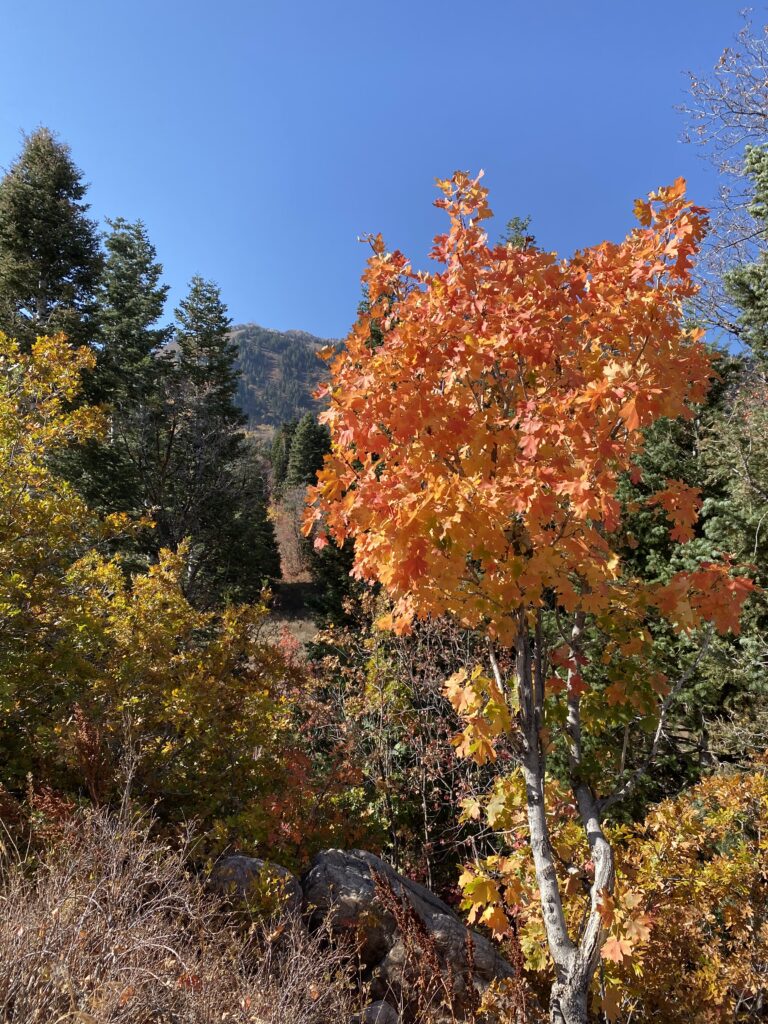Around this time of year, the beautiful green leaves change into beautiful yellows, reds, and oranges. Why do leaves change colors in the fall?

These simple changes in nature can make us excited for sweaters, hot cocoa, Halloween, and more. Plus, they are perfect for family pictures!
Where do the colors come from?
Inside of a leaf, there are chemicals called pigments creating the color. There are four main types of pigments.
- Chlorophyll (green) is very important because this chemical makes it possible for trees to produce food from sunlight.
- Carotenoid (yellow & orange) creates colors in some fruits and vegetables as well as leaves.
- Anthocyanin (reds) adds red color to plants.
Why do leaves change colors?
Leaves are green in the spring and summer because of the amount of sunlight. Sunlight triggers the leaves to produce more chlorophyll.
As summer changes into fall, the number of hours of sunlight start to change. As daylight hours are getting shorter, the leaves are preparing for winter and stop making chlorophyll. The stopped process of chlorophyll releases carotenoid and anthocyanin more and shows the beautiful yellows, oranges, and reds that we all love.
Does weather effect the change in leaves?
Weather can play an important role in when and how quickly the leaves change colors. The colder the weather is, earlier on in the year, the faster the leaves will change.
Extreme weather can also play an important role on leaves and how long they stay. If there is any early frost, the chance of the pretty leaves staying for long, isn’t likely.
A drought can also effect leaves, and cause a delay in color change for a few weeks.
For leaves to have the perfect color three things need to happen;
- a warm, and wet spring
- a summer that isn’t too dry or hot
- an autumn with lots of sunny days and cool nights.
